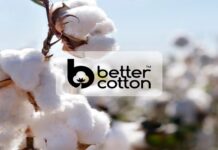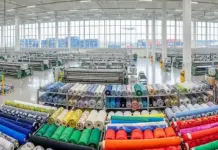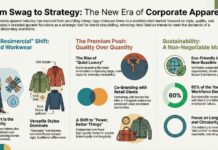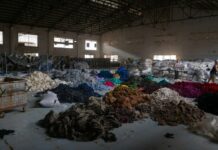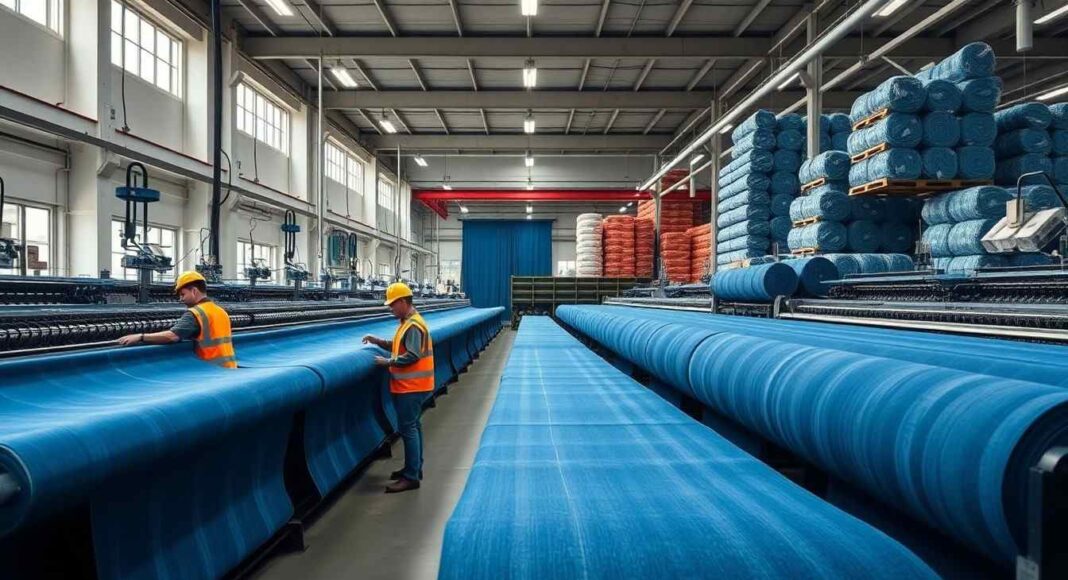Globalization of Denim Supply Chains Fuels Sourcing from Low-Cost Hubs While Driving Ethical Compliance Pressure
Denim, the ubiquitous fabric that has been the embodiment of traditional style and strong resistance, is currently at a crossroads in the global market. Denim has been the best example of both. The Denim Fabric Strategic Business Report 2025 sheds light on the far-reaching developments that are controlling the denim market. It highlights the globalisation of supply chains as well as the rising expectations for ethical compliance, both of which are redefining sourcing strategies and production dynamics.
The report indicates that the global denim market is facing a major transformation, influenced by changing consumer behavior, stringent regulatory demands, and globalization of supply chains. The global market for Denim Fabric was valued at US$17.3 Billion in 2024 and is projected to reach US$21.0 Billion by 2030, growing at a CAGR of 3.2% from 2024 to 2030.This growth path speaks volumes about the phenomenal resilience and flexibility of the industry as it weathers a rapidly complicated world.
Globalization of Denim Supply Chains: Opportunities and Challenges
The globalization of denim value chains has created new avenues for cost savings and expansion into markets. Manufacturers have, through the procurement of raw materials and manufacturing capacity from low-cost centers, achieved lowering of operational costs while responding to increasing world demand for denim products. Asian-Pacific, China, India, and Bangladesh are among the emerging regions for denim manufacturing based on their low-cost labor, cheapest raw materials, and developed manufacturing base.
The Denim Fabric Strategic Business Report 2025 identifies that the market in Asia-Pacific holds a 27.3% share of the world market and is the greatest regional contributor to denim production. North America is very close behind, with the United States likely to remain a strong consumer and innovator in the market, 6.1% CAGR to reach $4.2 Billion by 2030.
Nevertheless, though globalization provides cost benefits, it also poses unusual challenges to supply chain effectiveness and ethical adherence. Supply chain fragmentation across several geographies has added to the complexity of ensuring consistent product quality, delivery schedules, and conformity to changing environmental and social norms.
As regulators and consumers increasingly prioritize ethics and sustainability, brands must be under intense scrutiny to make sure their supply chains are meeting ethical labor standards, environmental responsibility, and transparency. This has brought about the necessity for leaders in industries to rethink sourcing strategies, juggling costs with compliance requirements in order to uphold consumer confidence and brand reputation.
Ethical Compliance Pressures and Sustainability
One of the most prominent developments influencing the denim fabric industry is a greater emphasis on ethical compliance. Modern consumers are increasingly looking for ethically produced products that cause little environmental impact or worker exploitation. This tendency is especially visible in Western nations, where environmentally conscious millennials and Generation Z customers control the majority of purchasing power.
The Denim Fabric Market Strategic Business Report 2025 identifies such obstacles, stating a rise in sustainability-focused certifications and measures that brands are implementing to stay ahead of the competition. To reduce its environmental impact, the industry is heavily investing in green technology such as organic and recycled cotton and water-saving dyeing procedures.
Meanwhile, adherence to international regulations like the European Union’s due diligence law and the U.S. Uyghur Forced Labor Prevention Act has made things even harder for firms. These pieces of legislation mandate brands to guarantee that none of their supply chains are associated with forced labor or unethical conduct, forcing producers to spend on transparency and traceability software.
For example, digital ledger and blockchain technologies are being used more and more to increase traceability, allowing brands to track each phase of the production process, from raw material sourcing through delivery. This degree of openness not only guarantees compliance but also increases consumer trust in ethically-made and sustainable denim.
Innovations in Denim Fabric Production
The push for sustainability and compliance has also resulted in considerable improvements in denim fabric manufacture. Manufacturers are researching innovative technologies that will reduce resource use while preserving the quality and durability that denim is known for.
Among the most significant developments is the use of laser technology for denim finishing. Older methods of finishing, utilizing heavy water, chemical, and energy consumption, are now yielding to laser etching machines that provide sharp designs and patterns with a low environmental footprint. Likewise, waterless dyeing methods and biological dyes are increasingly popular as new ways of minimizing the ecological footprint of denim manufacturing.
The Denim Fabric Strategic Business Report 2025 observes that the premium denim market is especially taking advantage of these developments. Consumers are prepared to pay extra for sustainable products, and this opens up opportunities for brands to invest in sustainable production processes without loss of profitability.
Additionally, technological innovation is also facilitating the creation of stretch and performance denim for consumers in need of comfort and functionality. Such innovations are allowing the denim sector to remain competitive in a fashion industry where players compete intensely, appealing to a larger consumer base.
Regional Highlights and Market Leaders
The international denim fabric market is characterized by regional differences, with each region being shaped by distinct consumer demand, manufacturing capacity, and economic considerations.
Asia-Pacific, being the biggest regional market, is fueled by its strong manufacturing industry and increasing consumer demand. India and Bangladesh are notable examples that have positioned themselves as denim manufacturing centers, shipping to big markets in North America and Europe. Its pursuit of automation and technological manufacturing advancements, which enhance productivity and reduce costs, further enhances its dominance.
In the interim, the United States remains a substantial participant in the denim market, not only as a significant consumer but also as a leader in innovation. With a projected market size of 6.1% CAGR to reach $4.2 Billion by 2030. the U.S. is a hotspot for premium denim brands that emphasize quality, sustainability, and ethical production.
Europe is the other critical market, fueled by sustainability and compliance focus. The region’s tough environmental laws and consumer demand for ethical purchases have created a den of organic and recycled denim. The European fashion brands are leading the way for sustainable production, prompting global brands to follow suit.
The Road Ahead
The Denim Fabric Market Strategic Business Report 2025 is a bright prospect for the denim business, highlighting its vigor and versatility in the face of a changing set of challenges. With the industry expected to expand from US $21.0 Billion by 2030, growing at a CAGR of 3.2% from 2024 to 2030, the future for denim is one of innovation, sustainability, and responsible business practice.
As global denim supply chains globalize further, the alignment of cost effectiveness and ethical compliance will continue to be a top priority for players in the industry. Companies that make investments in transparency, traceability, and sustainability will not only become regulatory compliant, but will also build consumer trust and loyalty.
Advances in textile manufacturing, including waterless dyeing, laser finishing, and performance denim, will drive growth further by meeting consumers’ needs for functionality and sustainability. Regional markets like Asia-Pacific, North America, and Europe will also have crucial roles in determining the industry’s direction, using their strengths to dominate production, consumption, and innovation.
Finally, the international denim fabric market is crossing into a new age, characterized by responsibility, effectiveness, and creativity. Adopting these principles, the market not only overcome the issues of the present but also ensures a sustainable and responsible future.






